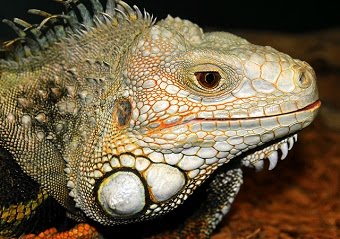*Big Eyed Tree Frog*
These beautiful frogs are known as big-eyed tree frogs.
Tree dwellers like these spend their whole life time in trees where it is safe.
These guys originate from Africa.
Tree frogs are small green frogs, who become more of a brown color as they mature.
The only time they will ever descend from the trees is to mate or lay their eggs.
Both male and females grow to only be 2 to 2 1/2 inches in length, females being slightly larger.
Males throats are a bit looser and can be a bluish shade of color.
The way males attract females is they will make a chirping or croaking sound.
Tree frogs are insectivorous, meaning they eat insects such as: small crickets, fruit flies, meal worms, wax worms, and any other small insect that is easy to ingest.
Big-eyed tree frogs have been recorded to living up to as long as 13 years.


















